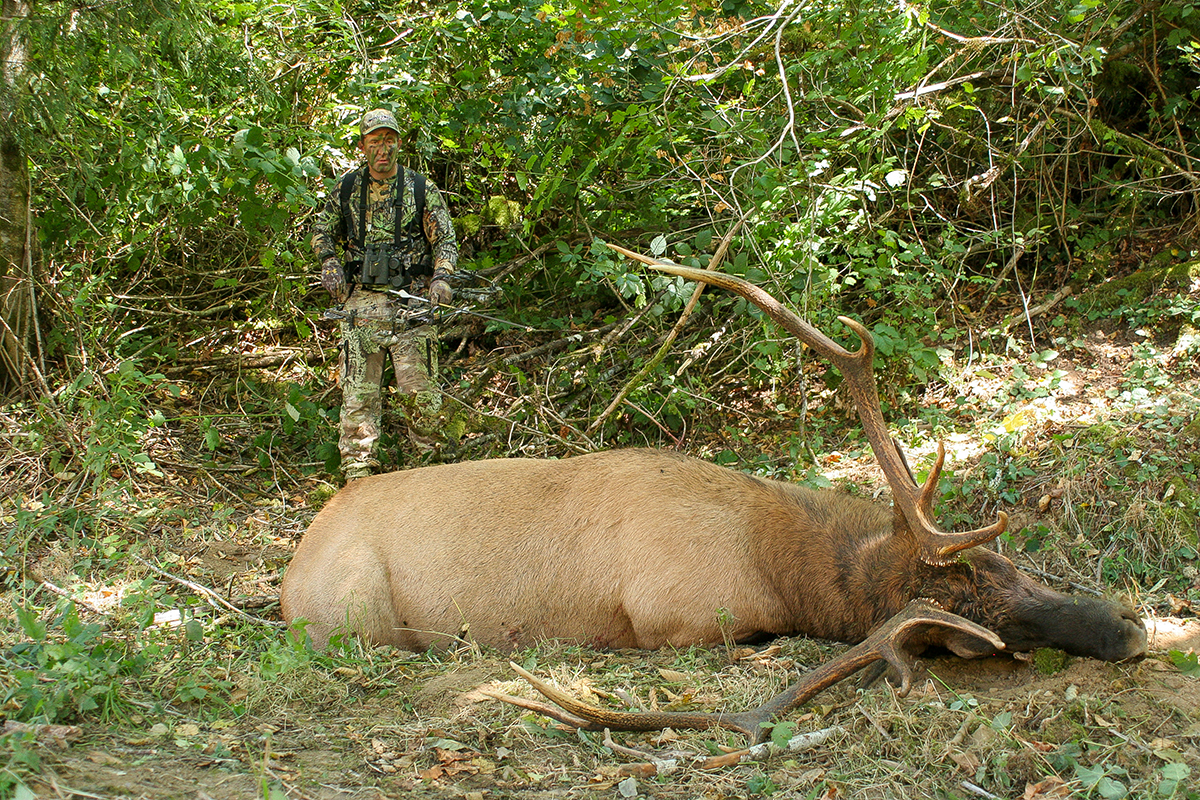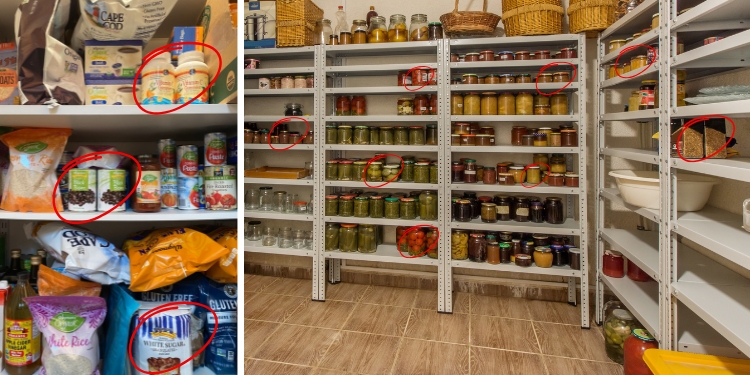The Best Foam Sleeping Pads for Backpacking, Trail Tested

Best Overall
Nemo Switchback
Warmest

Exped Flexmat Plus
Best Supplemental

Gossamer Gear Thinlight Pad
The best foam sleeping pads for backpacking are made of closed-cell foam, meaning they’re lightweight, waterproof, and best of all, can’t puncture. If inflatable pads have left you sleeping ground too many times, you’re trying to cut down ounces, or you just prefer a more stable, firm, and silent sleep system, foam sleeping pads are the answer. I slept on the best foam sleeping pads in the backcountry to find the best options on the market.
Best Foam Sleeping Pads: Reviews & Recommendations
Ashley Thess 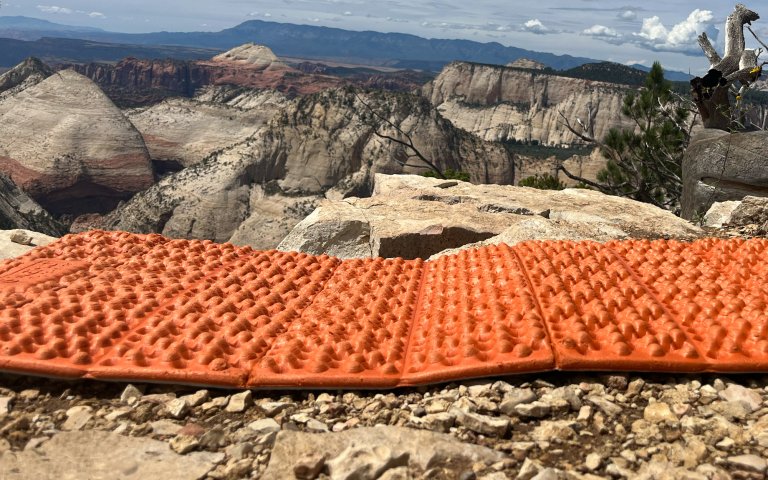
Buy at Cabela’s
buy at REI
buy on amazon
Pros
- Comfortable
- Lightweight
- Insulated coating
- Packs down to 5 inches
The Nemo Switchback is everything I’m looking for in a backpacking sleeping pad: comfortable, lightweight, and packs down easily. It’s the smallest packed size on this list (besides the ⅛-inch Thinlight), which always fits on top of my pack, no matter how full it is. If a packraft steals its usual spot, I can also successfully stuff it into a side pouch of my ULA Ohm backpacking backpack.
I bring the short version on every trip and I sit or lay on it during breaks or while making dinner. It’s comfortable to sleep on with an insulated bottom that puts your R-value at a 2. In the summertime this is all you need, but pair it with an inflatable in colder conditions.
My only fault on this pad is it isn’t the most durable, after a few seasons of bushwhacking the nodes start to compress and fray, though that doesn’t mean you have to retire it. I think it’s still comfortable to lay on.
Best Smooth: Big Agnes TwisterCane
Ashley Thess 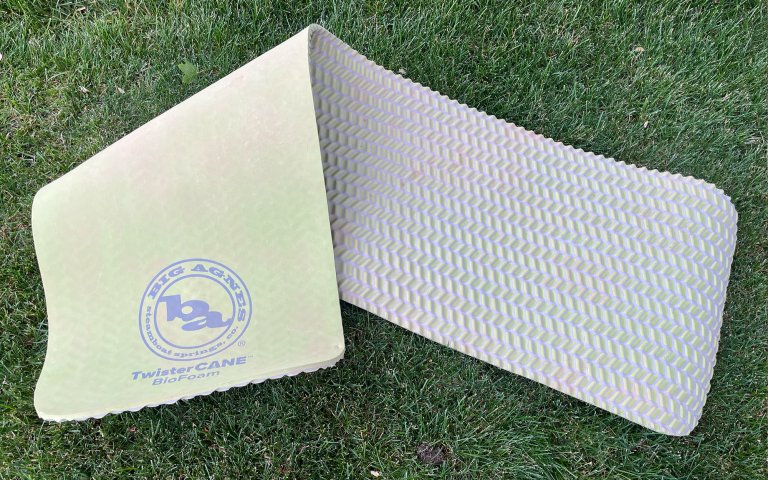
buy at backcountry
Pros
- Textured and smooth sides
- Made of 60% sugarcane resin
Cons
- Slightly lower R-value
- Must roll to store
- Bulky
Key Features
-
Weight:
14 ounces -
R-Value:
1.7 -
Thickness:
0.5 inch -
Length:
72 inches -
Packed Size:
20 x 7 inches
If the egg carton pattern of the other foam sleeping pads on this list sounds over stimulating to sleep on, the TwisterCane has the option to sleep on a smooth gym-mat-style surface. I slept comfortably, but when it came time to roll it up and keep it rolled while I strap it to the top of my bag I was a little annoyed. Rolling is not as efficient as a quick fold. It has a slightly less R-value than the other options of similar thickness.
Warmest: Exped Flexmat Plus
Ashley Thess 
buy at backcountry
Cons
- Not very comfortable
- Bulky
Key Features
-
Weight:
16.9 ounces (medium), 22.8 ounces (long wide) -
R-Value:
2.2 -
Thickness:
1.5 inches -
Length:
72 inches (medium), 77.6 inches (long wide) -
Packed Size:
20.5 x 6 x 7 inches (medium) or 25.6 x 6.3 x 7 inches (long wide)
Inching out an extra 0.2 R-value, the Plus is the thickest foam sleeping pad in my test. The thickness didn’t directly translate to comfort though; the aggressively tall nodules feel more like a massage chair than a mattress.
Best Supplemental: Gossamer Gear Thinlight Pad
Ashley Thess 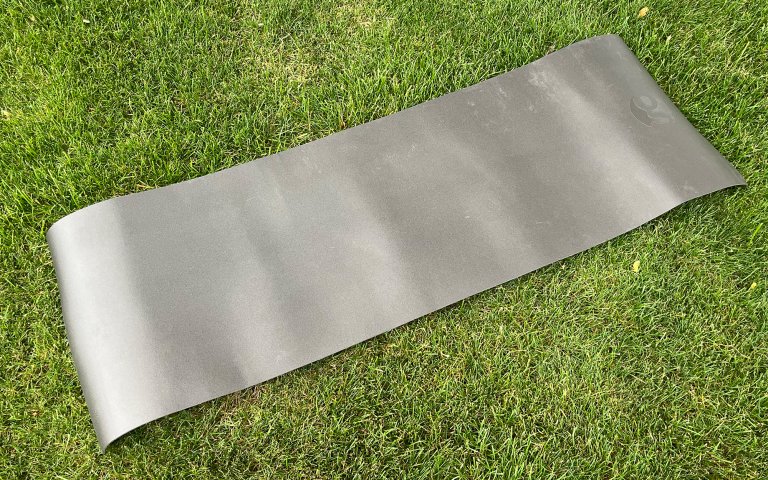
buy at garage grown gear
Pros
- Ultralight
- Small packed size
Cons
- Have to roll to store
- Too thin to sleep on
Key Features
-
Weight:
2.7 ounces (rolled), 4.1 ounces (rolled wide) -
R-Value:
0.5 -
Thickness:
0.125 inch -
Length:
58.7 inches -
Packed Size:
19 inches (rolled) or 25 inches (rolled wide) by approximately 3 inches depending on how tightly you roll it
The Thinlight isn’t telling any lies with its name. It’s thinner than a yoga mat, and in my opinion, not suitable for sleeping unless you truly do want to lay on the ground. But if you want a place to stretch, spread out your lunch, or take a siesta, it’s ideal. This mat also protects your inflatable pad from damage if you accidentally set up camp on a rock.
If you love the idea of a foam sleeping pad for backpacking, but don’t actually want to sleep on one, I’d recommend the Thinlight. You do have to roll it up every time, but because it’s so small you don’t have to be particularly efficient at it.
Ultralight: Gossamer Gear Torso Foam Pad
Ashley Thess 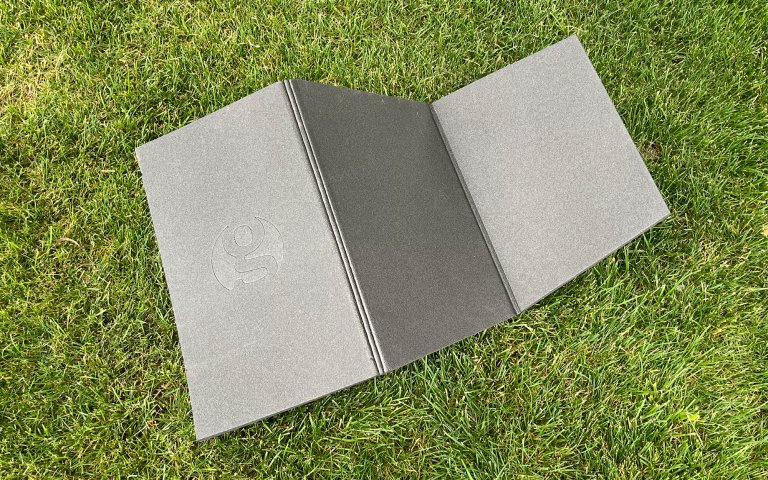
buy at gossamer gear
Key Features
-
Weight:
2.8 ounces -
R-Value:
None -
Thickness:
0.375 inch -
Length:
30 inches -
Packed Size:
18 x 10 x 1.25 inches
If you’re serious about cutting ounces, this is the sleep system for you. This short, fitted pad is just big enough for your torso. It isn’t adding any R-value and it isn’t as comfortable as my top recommendations, but it beats sleeping on the ground, as long as you don’t move a lot in your sleep.
Gossamer Gear’s secret weapon to make this sleep system bearable is the GVP Donut. This circular piece of foam is designed to relieve pressure on your lumbar or hips while sleeping with your lower half on the ground. The Torso Foam pad doesn’t pack down very small, but it’s designed to fit against the back of your pack and double as a sit pack.
Therm-a-rest Ridge Rest
Ashley Thess 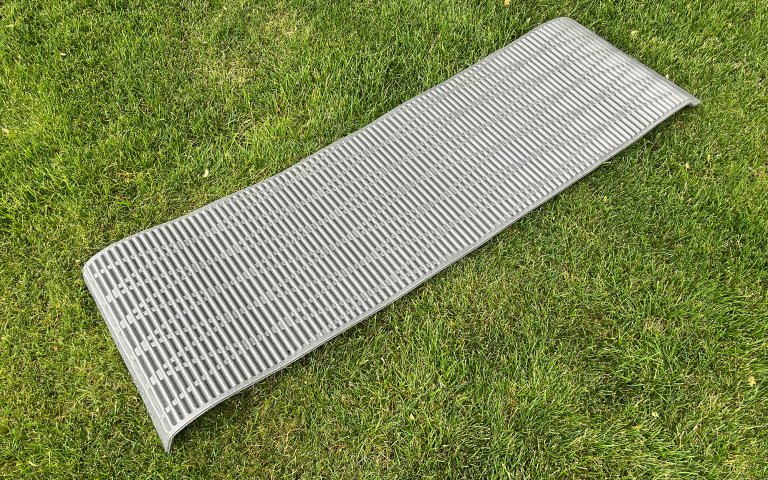
buy on amazon
Pros
- Comfortable
- Comes in a longer size
Key Features
-
Weight:
14 ounces (regular), 1 pound, 3 ounces (large) -
R-Value:
2 -
Thickness:
0.63 inch -
Length:
72 inches (regular), 77 inches (large) -
Packed Size:
20 x 8 inches (regular) or 8.5 inches (large)
The Ridge Rest is a comfortable mat to sleep on with the least aggressive patterning of the foam sleeping pads in this test. If the egg-carton nodules or tire tread pattern of the other options look too stimulating, this pad offers more relaxed ridges.
If you’re tall or want more room for a dog to curl up at your feet, the large size is 77 inches long. When rolled up, the regular is 8 inches in diameter, so it’s usually too big to fit nicely strapped over the top of my pack. If your pack has a pair of longer straps underneath, it’ll likely be more suited to store this roll.
Foregoing the quick and easy accordion fold, this pad doesn’t just fall into its packed size. Rolling it up after every stop is annoying, but I’m sure you only get faster the more you use it.
Therm-a-rest Z Lite Sol
Ashley Thess 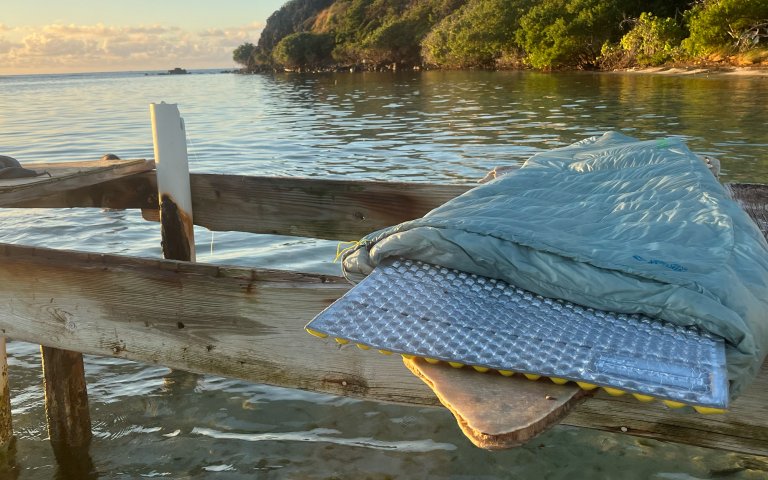
buy on amazon
buy at backcountry
buy at rei
Key Features
-
Weight:
10 ounces (small), 14 ounces (regular) -
R-Value:
2 -
Thickness:
0.75 inch -
Length:
51 inches (small), 72 inches (regular) -
Packed Size:
20 x 5.5 x 4 inches (small) or 5 inches (regular)
The Z Lite Sol has a reflective layer just like the Switchback, but unlike the Switchback you’re supposed to sleep on top of it so it reflects your body heat back towards you. Unfortunately, this pad folds with the silver surface facing outwards. This part will get the brunt of any sticks or rocks while you’re hiking.
I didn’t mind sleeping on the Z Lite Sol, though it wasn’t the most comfortable. It’s more durable than the Switchback, but it does fold up slightly larger.
Exped Flexmat
Ashley Thess 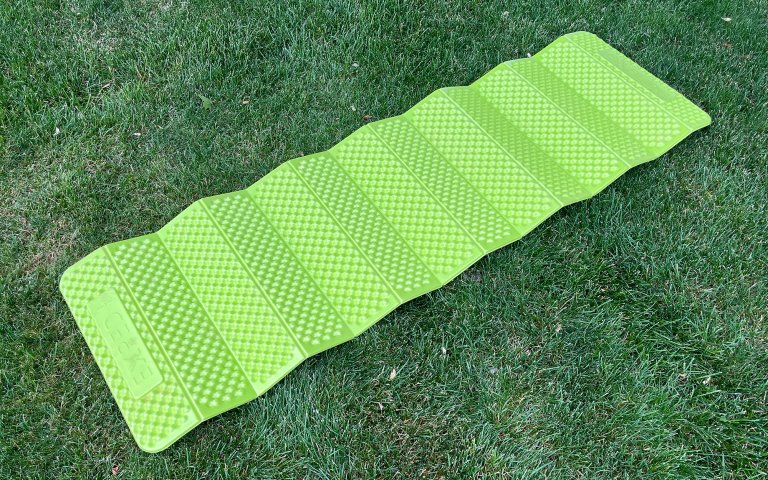
buy at rei
buy at backcountry
Cons
- Uncomfortable
- Large packed size
Key Features
-
Weight:
12.3 ounces (medium), 16.8 ounces (long wide) -
R-Value:
1.5 -
Thickness:
0.7 inches -
Length:
72 inches (medium), 77.6 inches (long wide) -
Packed Size:
20.5 x 5 x 6 inches (medium) or 25.6 x 5.5 x 4 inches (long wide)
Its packed size is larger than the Nemo Switchback, and a bit stiffer and thinner resulting in a firmer pad. If all you’re looking for is an extra layer for underneath your inflatable, this one is $10 cheaper than the Switchback. But while Exped makes the most comfortable air mattresses for camping, the Z Lite is one of the least comfortable stand alone foam pads on this list.
How I Tested the Best Foam Sleeping Pads for Backpacking
I used these sleeping pads to rest, relax, and up the R-value of my sleep system. While I’ve used backpacking quilts with a closed-cell foam pad camping in very hot conditions, I usually sleep inside the overstuffed Therm-a-Rest Parsec sleeping bag which certainly adds at least some comfort and warmth underneath.
I like a firm sleep spot and I don’t trust inflatable sleeping pads as far as I can throw them, so I was excited to experiment with these closed-cell foam pads and find their best use cases.
Things to Consider Before Buying the Best Foam Sleeping Pad
R-Value
R-value is how well your sleeping pad resists the cold of the ground, and it’s crucial to stay warm at night. Two is the low end of the spectrum meaning if you’re solely sleeping on one of the best foam sleeping pads for backpacking, it’s only appropriate for warm conditions.
Read Next: What Is R-Value? It’s Why Your Sleeping Bag Doesn’t Keep You Warm
Though closed-cell foam pads are also perfect for winter as an extra layer underneath your inflatable pad. If your air-filled pad has an R-value of 4, adding an extra 2 underneath will give you an edge in the shoulder season.
Weight
Most of these sleeping pads weigh at least a few ounces less than your typical inflatable pad; the Gossamer Gear models coming in significantly lighter.
Comfort
I won’t claim that closed-cell foam pads are as comfortable as infltable sleeping pads, but they won’t fail, they don’t crinkle with every turn, and I’ve gotten plenty of good night’s sleep on them. They’re super versatile and after a full day of hiking, I look forward to crashing on a reliable foam sleeping pad.
Final Thoughts
My favorite foam sleeping pad for backpacking is undoubtedly the Nemo Switchback. It packs down small, feels comfortable, and the short version is only 10.5 ounces. If you want the perks of a place to stretch, eat lunch, and protect an inflatable pad, the Gossamer Gear Thinlight is just 2.7 ounces. Never worry about a punctured sleeping pad again with one of these recommendations.
Read the full article here




